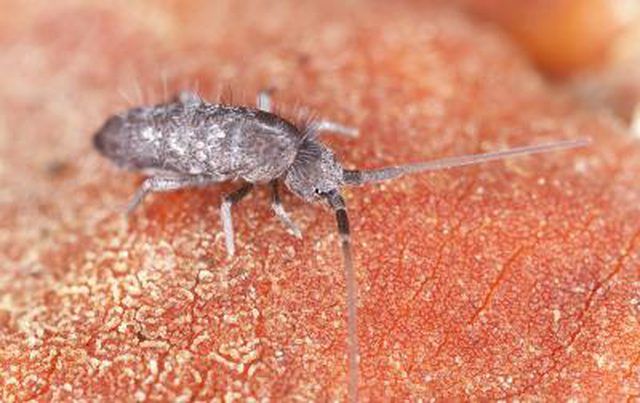Bulbs
Flower Basics
Flower Beds & Specialty Gardens
Flower Garden
Garden Furniture
Garden Gnomes
Garden Seeds
Garden Sheds
Garden Statues
Garden Tools & Supplies
Gardening Basics
Green & Organic
Groundcovers & Vines
Growing Annuals
Growing Basil
Growing Beans
Growing Berries
Growing Blueberries
Growing Cactus
Growing Corn
Growing Cotton
Growing Edibles
Growing Flowers
Growing Garlic
Growing Grapes
Growing Grass
Growing Herbs
Growing Jasmine
Growing Mint
Growing Mushrooms
Orchids
Growing Peanuts
Growing Perennials
Growing Plants
Growing Rosemary
Growing Roses
Growing Strawberries
Growing Sunflowers
Growing Thyme
Growing Tomatoes
Growing Tulips
Growing Vegetables
Herb Basics
Herb Garden
Indoor Growing
Landscaping Basics
Landscaping Patios
Landscaping Plants
Landscaping Shrubs
Landscaping Trees
Landscaping Walks & Pathways
Lawn Basics
Lawn Maintenance
Lawn Mowers
Lawn Ornaments
Lawn Planting
Lawn Tools
Outdoor Growing
Overall Landscape Planning
Pests, Weeds & Problems
Plant Basics
Rock Garden
Rose Garden
Shrubs
Soil
Specialty Gardens
Trees
Vegetable Garden
Yard Maintenance
How to Kill Springtail Collembolas
How to Kill Springtail Collembolas. Springtails are tiny, wingless, jumping insects that belong to the Collembola order. The insects live outdoors in moist environments and are typically considered beneficial because they help break down organic matter in the soil. Having a large springtail population indicates you also have healthy, organically...

Springtails are tiny, wingless, jumping insects that belong to the Collembola order. The insects live outdoors in moist environments and are typically considered beneficial because they help break down organic matter in the soil. Having a large springtail population indicates you also have healthy, organically rich soil, but the insects quickly become nuisances when they start appearing en masse on walkways, patios and buildings. If that occurs, various cultural, mechanical and chemical control measures can help you kill the springtails.
Reduce Moisture
Up to 100,000 springtails can thrive in just one cubic square yard of shady, moist soil. Reducing soil moisture and air humidity helps get rid of springtails by making the environment unsuitable for the insects. Remove accumulations of fallen leaves as well as excess mulch. Keeping the mulch layers just 2 to 4 inches thick allows the material to dry faster, which means the springtails won't have time to move in. In addition, keep mulch at least 12 inches away from your home's foundation so you don't inadvertently invite the creatures indoors. Avoid overwatering landscaping and vegetable plants, and allow the soil to dry to the touch between irrigation sessions. Fix any leaky spigots and turn off automatic sprinkler systems during the course of a springtail infestation to reduce soil moisture.
Mechanical Control Measures
Large groups of springtails sometimes show up in pools or on sidewalks, driveways, patios or building exteriors. Although the insects typically go away in just 24 to 48 hours, you can squirt the springtails with a strong jet of water from a garden hose if you'd like them to go away sooner. During severe outbreaks, millions of springtails might cover the surface of your swimming pool, looking more like a fine scum than floating insects. Use a pool skimmer to remove the insects and make sure your pool filter is working correctly. Limiting the amount of mulch and lush landscaping plants you have around the pool gets rid of potential feeding spots and breeding grounds, which should help prevent future springtail infestations.
Chemical Treatments
You can effectively treat severe springtail infestations with a pyrethroid-based insecticide, such as one containing cyfluthrin or bifenthrin. Choose a liquid format so you don't stain your patio, walkways or the exterior of your home. Carefully read and follow the manufacturer's mixing and application instructions. One product recommends mixing 1 tablespoon of concentrate for every 1 gallon of water. Use a small tank sprayer to apply the solution to springtail-infested soils. Keep the insects outdoors by spraying the solution 3 feet up the exterior wall of your home and about 6 feet out from your house. Spray insecticide solutions in the late afternoon or early evening when the springtails are most active. Spray again in seven days, if insects are still present. Only spray pyrtheroid products when no rain is expected for the following 24 hours. Pyrethroids are highly toxic to bees, so don't use on opened flowers or blooming vegetables. Reduce the risk of chemical exposure by wearing protective clothing and eyewear. Keep people and pets out of the treatment area until the solution dries.
Potted Plant Help
Springtails don't harm plants, but those tiny grey insects might gross you out if you spot them hopping around in your pots. You have several options when it comes to treating a potted plant infestation, including simply repotting plants using clean soil. Space out watering until the soil is dry to the touch to make your plant less attractive to springtails, as well as removing any moist moss, fungus or algae growing on the soil's surface. As a last resort, spray your plant and the surrounding soil with an aerosol containing a pyrethrin or permethrin. Before spraying, check the product's label to make sure the product can be safely used on your specific plant.